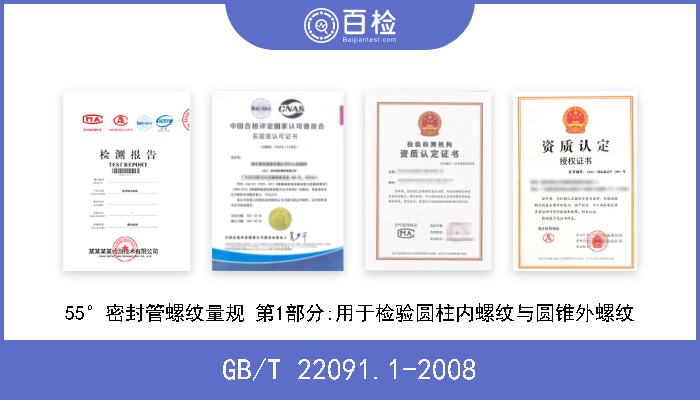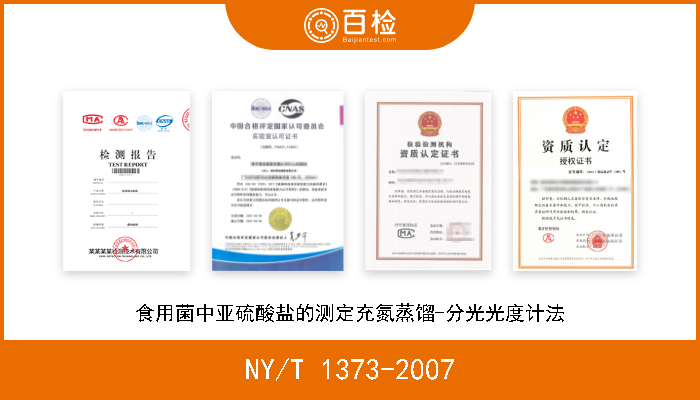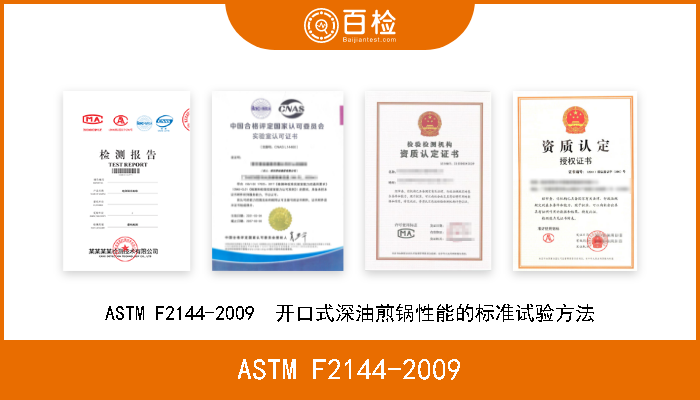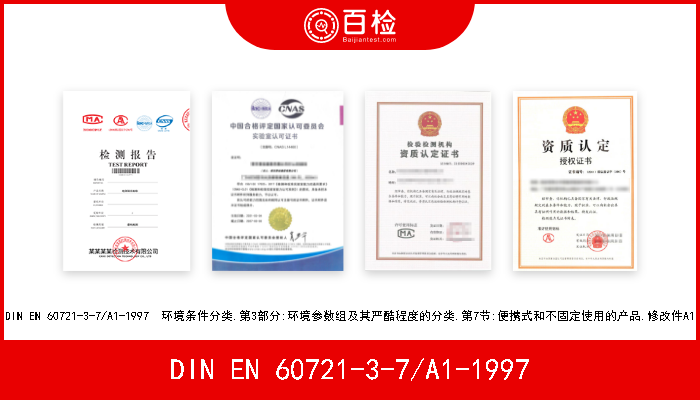BS EN ISO 14253-2-2011 产品几何量技术规范(GPS).工件与测量设备的测量检验.GPS测量中,测量设备校准中和产品检验中不确定度的评估指南
百检网 2021-07-14
标准号:BS EN ISO 14253-2-2011
中文标准名称:产品几何量技术规范(GPS).工件与测量设备的测量检验.GPS测量中,测量设备校准中和产品检验中不确定度的评估指南
英文标准名称:Geometrical product specifications (GPS). Inspection by measurement of workpieces and measuring equipment. Guidance for the estimation of uncertainty in GPS measurement, in calibration of measuring equipment and in product verification
标准类型:A52
发布日期:2011/5/31 12:00:00
实施日期:2011/5/31 12:00:00
中国标准分类号:A52
国际标准分类号:17.040.01
引用标准:ISO 14253-1-1998;ISO 14660-1-1999;ISO/IEC Guide 98-3-2008;ISO/IEC Guide 99-2007
适用范围:This part of ISO 14253 gives guidance on the implementation of the concept of the “Guide to the estimation ofuncertainty in measurement” (in short GUM) to be applied in industry for the calibration of (measurement)standards and measuring equipment in the field of GPS and the measurement of workpiece GPScharacteristics. The aim is to promote full information on how to achieve uncertainty statements and providethe basis for international comparison of measurement results and their uncertainties (relationship betweenpurchaser and supplier).This part of ISO 14253 is intended to support ISO 14253-1. Both parts are beneficial to all technical functionsin a company in the interpretation of GPS specifications [i.e. tolerances of workpiece characteristics andvalues of maximum permissible errors (MPEs) for metrological characteristics of measuring equipment].This part of ISO 14253 introduces the Procedure for Uncertainty MAnagement (PUMA), which is a practical,iterative procedure based on the GUM for estimating uncertainty of measurement without changing the basicconcepts of the GUM. It is intended to be used generally for estimating uncertainty of measurement and givingstatements of uncertainty for:- single measurement results;- the comparison of two or more measurement results;- the comparison of measurement results — from one or more workpieces or pieces of measurementequipment — with given specifications [i.e. maximum permissible errors (MPEs) for a metrologicalcharacteristic of a measurement instrument or measurement standard, and tolerance limits for aworkpiece characteristic, etc.], for proving conformance or non-conformance with the specification.The iterative method is based basically on an upper bound strategy, i.e. overestimation of the uncertainty at alllevels, but the iterations control the amount of overestimation. Intentional overestimation — and not underestimation— is necessary to prevent wrong decisions based on measurement results. The amount ofoverestimation is controlled by economical evaluation of the situation.The iterative method is a tool to maximize profit and minimize cost in the metrological activities of a company.The iterative method/procedure is economically self-adjusting and is also a tool to change/reduce existinguncertainty in measurement with the aim of reducing cost in metrology (manufacture). The iterative methodmakes it possible to compromise between risk, effort and cost in uncertainty estimation and budgeting.
中文标准名称:产品几何量技术规范(GPS).工件与测量设备的测量检验.GPS测量中,测量设备校准中和产品检验中不确定度的评估指南
英文标准名称:Geometrical product specifications (GPS). Inspection by measurement of workpieces and measuring equipment. Guidance for the estimation of uncertainty in GPS measurement, in calibration of measuring equipment and in product verification
标准类型:A52
发布日期:2011/5/31 12:00:00
实施日期:2011/5/31 12:00:00
中国标准分类号:A52
国际标准分类号:17.040.01
引用标准:ISO 14253-1-1998;ISO 14660-1-1999;ISO/IEC Guide 98-3-2008;ISO/IEC Guide 99-2007
适用范围:This part of ISO 14253 gives guidance on the implementation of the concept of the “Guide to the estimation ofuncertainty in measurement” (in short GUM) to be applied in industry for the calibration of (measurement)standards and measuring equipment in the field of GPS and the measurement of workpiece GPScharacteristics. The aim is to promote full information on how to achieve uncertainty statements and providethe basis for international comparison of measurement results and their uncertainties (relationship betweenpurchaser and supplier).This part of ISO 14253 is intended to support ISO 14253-1. Both parts are beneficial to all technical functionsin a company in the interpretation of GPS specifications [i.e. tolerances of workpiece characteristics andvalues of maximum permissible errors (MPEs) for metrological characteristics of measuring equipment].This part of ISO 14253 introduces the Procedure for Uncertainty MAnagement (PUMA), which is a practical,iterative procedure based on the GUM for estimating uncertainty of measurement without changing the basicconcepts of the GUM. It is intended to be used generally for estimating uncertainty of measurement and givingstatements of uncertainty for:- single measurement results;- the comparison of two or more measurement results;- the comparison of measurement results — from one or more workpieces or pieces of measurementequipment — with given specifications [i.e. maximum permissible errors (MPEs) for a metrologicalcharacteristic of a measurement instrument or measurement standard, and tolerance limits for aworkpiece characteristic, etc.], for proving conformance or non-conformance with the specification.The iterative method is based basically on an upper bound strategy, i.e. overestimation of the uncertainty at alllevels, but the iterations control the amount of overestimation. Intentional overestimation — and not underestimation— is necessary to prevent wrong decisions based on measurement results. The amount ofoverestimation is controlled by economical evaluation of the situation.The iterative method is a tool to maximize profit and minimize cost in the metrological activities of a company.The iterative method/procedure is economically self-adjusting and is also a tool to change/reduce existinguncertainty in measurement with the aim of reducing cost in metrology (manufacture). The iterative methodmakes it possible to compromise between risk, effort and cost in uncertainty estimation and budgeting.
百检能给您带来哪些改变?
1、检测行业全覆盖,满足不同的检测;
2、实验室全覆盖,就近分配本地化检测;
3、工程师一对一服务,让检测更精准;
4、免费初检,初检不收取检测费用;
5、自助下单 快递免费上门取样;
6、周期短,费用低,服务周到;
7、拥有CMA、CNAS、CAL等权威资质;
8、检测报告权威有效、中国通用;
客户案例展示
相关商品
版权与免责声明
①本网注名来源于“互联网”的所有作品,版权归原作者或者来源机构所有,如果有涉及作品内容、版权等问题,请在作品发表之日起一个月内与本网联系,联系邮箱service@baijiantest.com,否则视为默认百检网有权进行转载。
②本网注名来源于“百检网”的所有作品,版权归百检网所有,未经本网授权不得转载、摘编或利用其它方式使用。想要转载本网作品,请联系:service@baijiantest.com。已获本网授权的作品,应在授权范围内使用,并注明"来源:百检网"。违者本网将追究相关法律责任。
③本网所载作品仅代表作者独立观点,不代表百检立场,用户需作出独立判断,如有异议或投诉,请联系service@baijiantest.com
相关问答
最新资讯


















